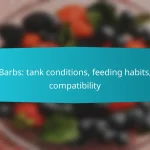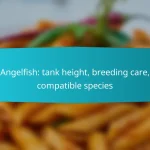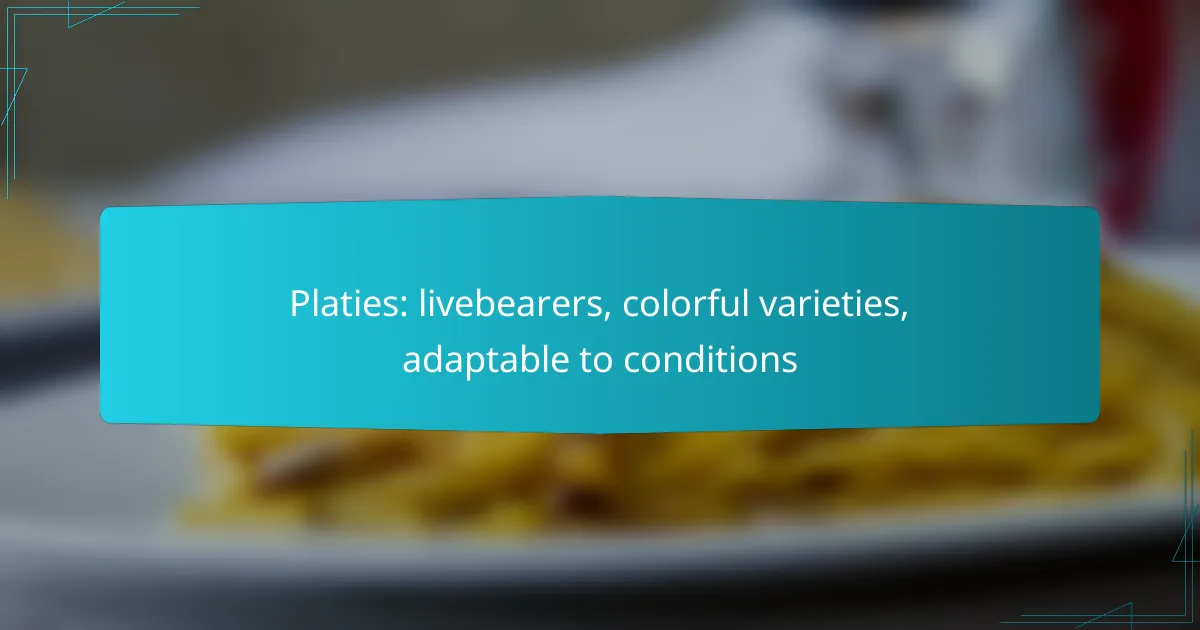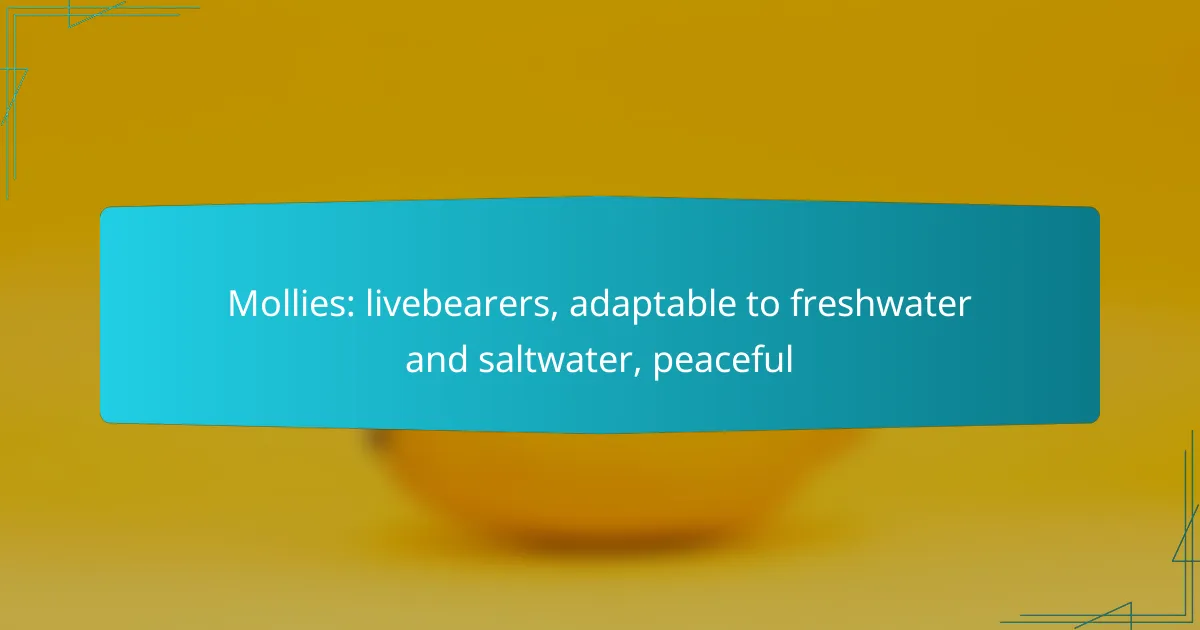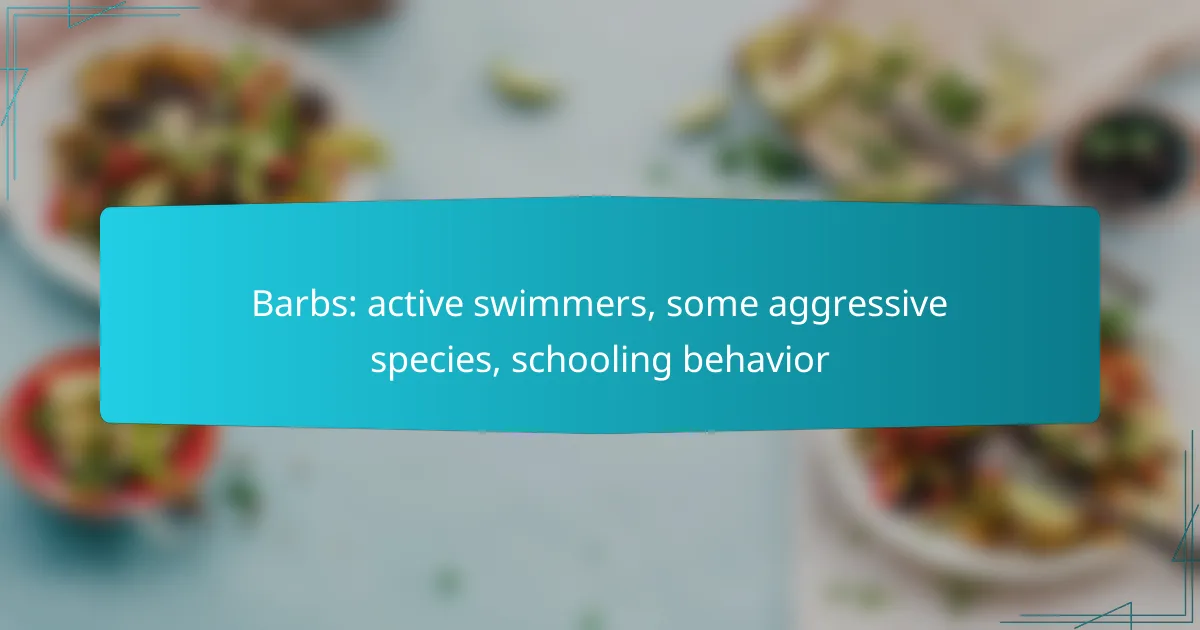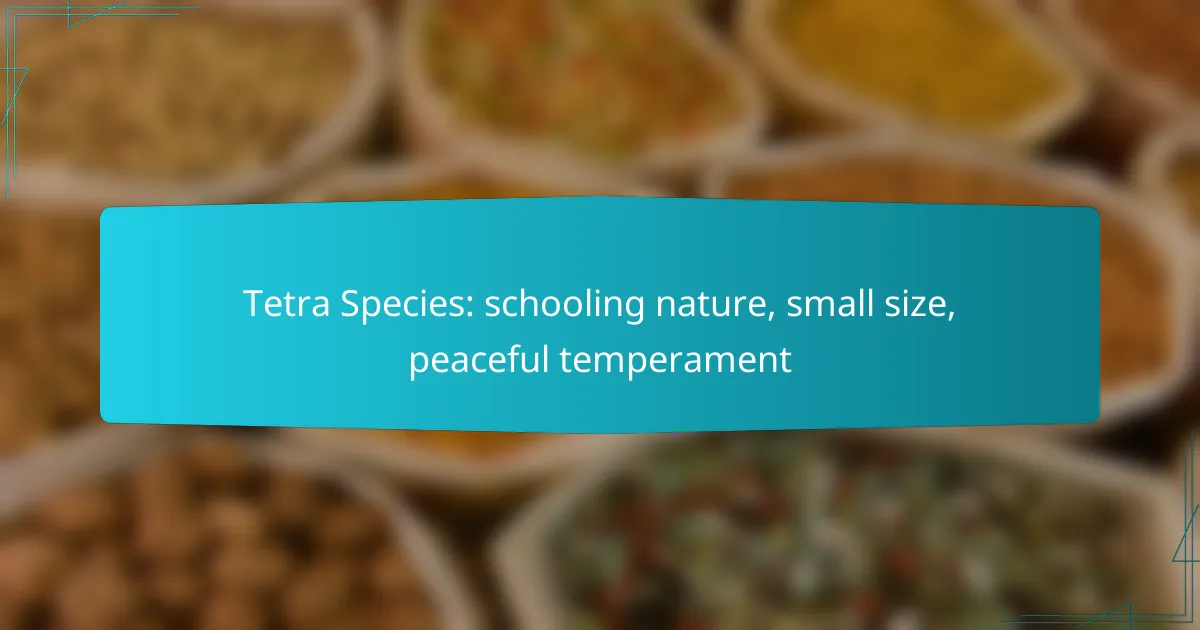Platies are vibrant livebearers known for their colorful varieties and adaptability to various water conditions, making them an ideal choice for both beginners and experienced aquarists. Popular types like Sunset, Red, and Blue Platies not only enhance the aesthetic of any aquarium but are also hardy and easy to care for, thriving best when their specific needs are met.

What are the best Platies varieties for beginners?
For beginners, the best Platies varieties are those that are hardy, colorful, and easy to care for. Sunset, Red, and Blue Platies are popular choices due to their vibrant appearances and adaptability to various water conditions.
Sunset Platy
The Sunset Platy is known for its stunning blend of orange and yellow hues, resembling a sunset. This variety is particularly appealing to beginners because it thrives in a range of water conditions and is generally disease-resistant.
When keeping Sunset Platies, ensure the water temperature is between 22-28°C (72-82°F) and maintain a pH level around 6.8-8.0. Regular water changes will help keep them healthy and vibrant.
Red Platy
Red Platies are characterized by their bright red coloration, making them a striking addition to any aquarium. They are sociable fish that do well in community tanks, which is ideal for novice aquarists.
To care for Red Platies, provide them with a well-planted tank and a balanced diet of flakes and occasional live food. They prefer slightly acidic to neutral water conditions, with a temperature range similar to other Platies.
Blue Platy
The Blue Platy features a beautiful blue coloration that can vary from light to deep shades. This variety is also known for its peaceful nature, making it suitable for mixed-species tanks.
For optimal health, Blue Platies should be kept in groups of at least three to promote social behavior. They thrive in similar water conditions as other Platies, with a preference for a stable environment and regular feeding schedules.
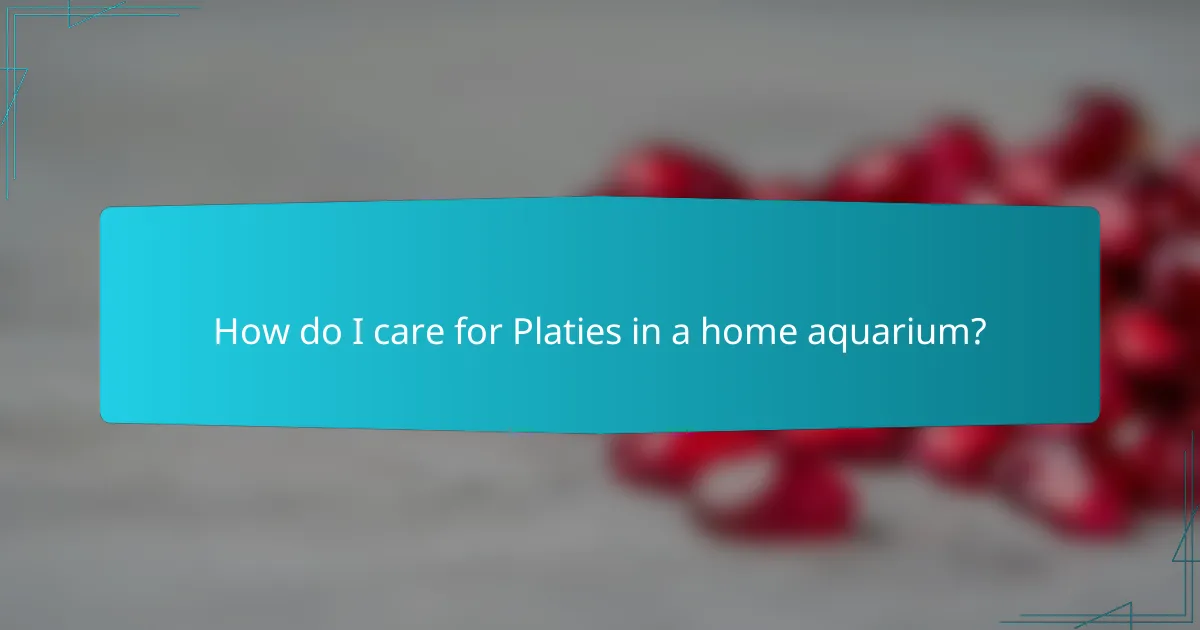
How do I care for Platies in a home aquarium?
Caring for Platies in a home aquarium involves maintaining suitable water conditions, providing a balanced diet, and ensuring adequate tank space. These colorful livebearers are adaptable but thrive best when their specific needs are met.
Water temperature requirements
Platies prefer a water temperature range of 24-28°C (75-82°F). Keeping the water within this range promotes their health and vibrant coloration. Sudden temperature fluctuations should be avoided, as they can stress the fish.
Using a reliable aquarium heater can help maintain stable temperatures. Regularly check the water temperature with a thermometer to ensure it remains consistent.
Feeding guidelines
Platies are omnivorous and should be fed a varied diet that includes high-quality flakes, pellets, and occasional treats like frozen or live foods. Feeding them once or twice a day is generally sufficient, providing only what they can consume in a few minutes.
Avoid overfeeding, as this can lead to water quality issues and health problems for the fish. Incorporating vegetable matter, such as blanched spinach or algae wafers, can also enhance their diet.
Tank size recommendations
A minimum tank size of 75 liters (20 gallons) is recommended for a small group of Platies. This allows them enough space to swim and establish territories. Larger tanks can accommodate more fish and help maintain better water quality.
When setting up the tank, include plenty of plants and hiding spots to create a comfortable environment. Regular water changes and filtration are essential to keep the tank healthy and the fish thriving.
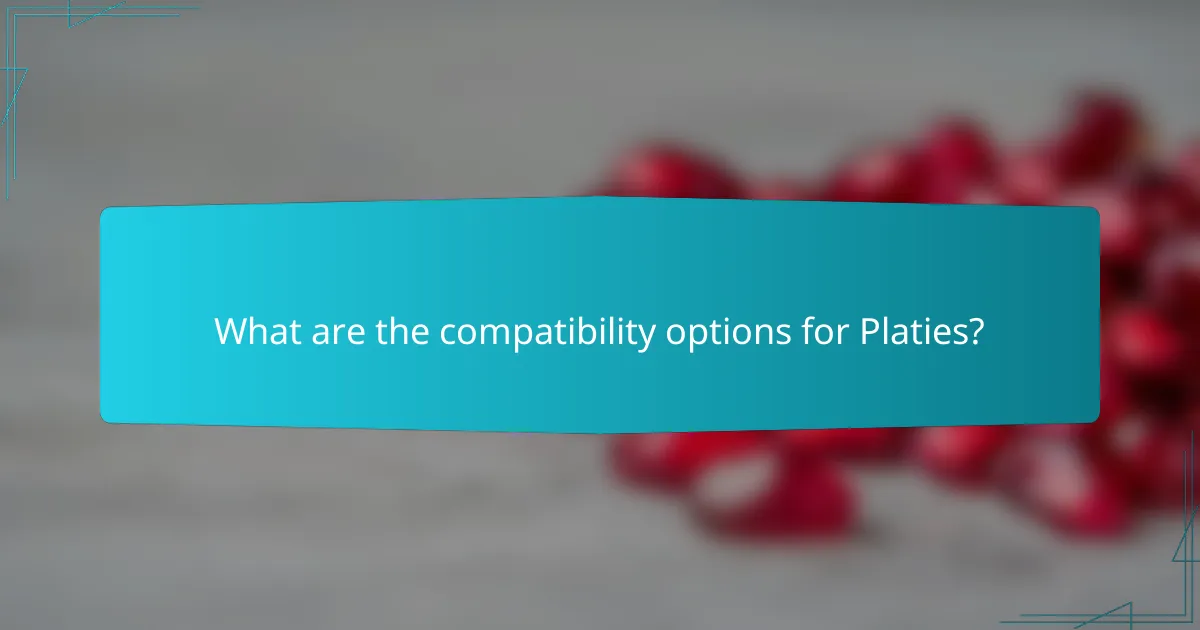
What are the compatibility options for Platies?
Platies are generally peaceful fish that thrive in community tanks with compatible species. When selecting tank mates, consider their temperament, size, and environmental needs to ensure a harmonious aquarium environment.
Compatible tank mates
Platies can coexist well with a variety of other peaceful fish, making them ideal for community tanks. Suitable companions include guppies, mollies, swordtails, and tetras, as they share similar water conditions and temperaments.
When choosing tank mates, aim for species that are similar in size and behavior. For instance, small to medium-sized fish that prefer similar water temperatures and pH levels will create a balanced ecosystem. A good rule of thumb is to keep fish that are not overly aggressive and can tolerate a range of water conditions.
Incompatible species
While Platies are generally peaceful, some species can pose challenges. Avoid keeping them with aggressive fish like cichlids or larger predatory species, as these can stress or harm Platies.
Additionally, avoid very small fish that may be seen as prey, such as neon tetras, when housed with larger or more aggressive species. Always research potential tank mates to ensure compatibility and prevent conflicts in your aquarium setup.

How do Platies adapt to different water conditions?
Platies are highly adaptable fish that can thrive in a variety of water conditions. Their ability to adjust to different pH levels and hardness makes them suitable for both novice and experienced aquarists.
Optimal pH levels
Platies generally prefer a pH range of 6.8 to 8.5, which allows them to flourish in both slightly acidic and alkaline environments. Maintaining a stable pH within this range is crucial for their health and breeding success.
To ensure optimal pH levels, regularly test the water with a reliable kit and make gradual adjustments if necessary. Rapid changes can stress the fish and lead to health issues.
Hardness tolerance
Platies can tolerate a wide range of water hardness, typically between 5 to 20 dGH (degrees of general hardness). This flexibility enables them to adapt to various water sources, including tap water that may vary in mineral content.
When setting up a tank, consider the hardness of your local water supply. If it falls outside the preferred range, you can adjust it using commercially available products or by mixing different water sources to achieve the desired hardness.
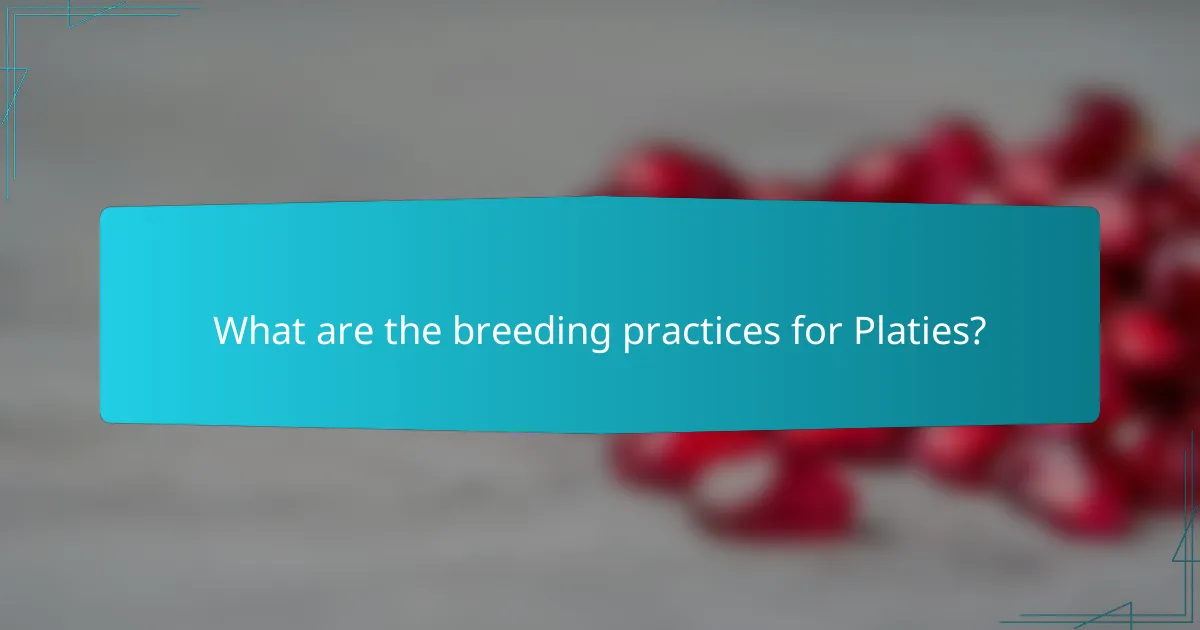
What are the breeding practices for Platies?
Breeding Platies involves creating a suitable environment and understanding their reproductive cycle. These livebearers are known for their vibrant colors and adaptability, making them popular among aquarists.
Breeding setup
To successfully breed Platies, set up a dedicated breeding tank that is at least 10 gallons (38 liters) to provide ample space. Ensure the water is clean and well-filtered, with a temperature range of 24-28°C (75-82°F) and a pH level between 6.8 and 8.5.
Include plenty of hiding spots using plants or decorations, as this helps reduce stress for the female during and after giving birth. A separate breeding box or net can also be beneficial to protect fry from adult fish.
Gestation period
The gestation period for Platies typically lasts around 28-35 days, depending on water temperature and overall health. Warmer temperatures can shorten this period slightly, while cooler conditions may extend it.
During this time, it’s crucial to monitor the female for signs of impending birth, such as a swollen abdomen and a darkening gravid spot near the anal fin. Once she gives birth, remove her from the tank to prevent her from eating the fry.

What are the common health issues in Platies?
Platies can experience several health issues, primarily due to environmental stressors or poor water quality. Common problems include Ich disease and fin rot, both of which can significantly affect their well-being if not addressed promptly.
Ich disease
Ich disease, caused by the parasite Ichthyophthirius multifiliis, is a prevalent issue in Platies. This condition manifests as white spots on the fish’s body and fins, resembling grains of salt. If left untreated, it can lead to severe stress and even death.
To prevent Ich, maintain stable water conditions, including temperature and pH levels. If you notice symptoms, consider using a specialized treatment available at pet stores, and ensure to follow the dosage instructions carefully. Quarantining new fish before introducing them to your main tank can also help minimize the risk of outbreaks.
Fin rot
Fin rot is a bacterial infection that affects the edges of a Platy’s fins, causing them to appear frayed or discolored. This condition often arises from poor water quality, stress, or injuries. Early detection is crucial for effective treatment.
To manage fin rot, improve water quality by performing regular water changes and monitoring ammonia and nitrite levels. Treat the affected fish with antibacterial medications, and ensure they have a stress-free environment to promote healing. Avoid overcrowding in the tank, as this can exacerbate health issues.
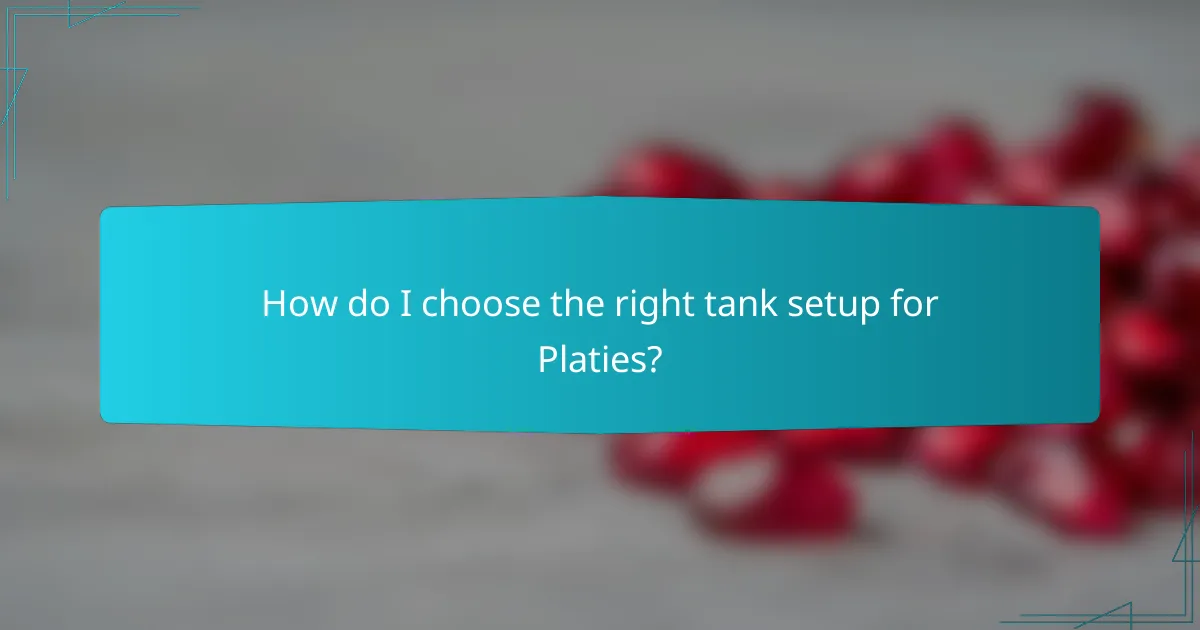
How do I choose the right tank setup for Platies?
To choose the right tank setup for Platies, focus on providing a spacious environment with suitable water conditions and compatible tank mates. Platies thrive in a well-maintained aquarium with appropriate substrate, plants, and decorations that mimic their natural habitat.
Substrate options
When selecting substrate for Platies, consider options like gravel, sand, or a planted substrate. Gravel is a popular choice as it allows for good water flow and is easy to clean, while sand can provide a softer bottom that is gentle on the fish.
For planted tanks, a nutrient-rich substrate can promote healthy plant growth, which benefits Platies by providing hiding spots and improving water quality. Aim for a substrate depth of around 2-3 inches to support plant roots while allowing for easy movement.
Always rinse substrate thoroughly before adding it to the tank to remove dust and debris. Avoid sharp-edged materials that could injure your fish, and ensure that the substrate complements the overall aesthetics of your aquarium setup.



